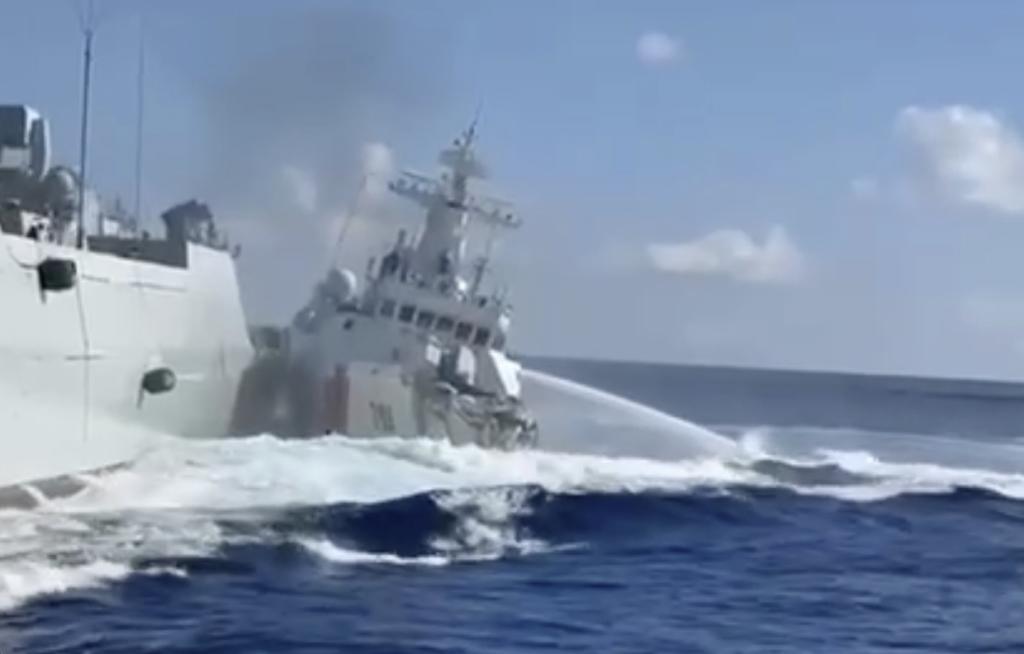It's another hot summer between the Chinese and Filipino military. Both continue their dangerous war games in the disputed waters of the South China Sea. The latest episode was this Monday: a Chinese Navy ship collided with another vessel from its own coast guard while chasing a Filipino ship.
The incident occurred near the Scarborough Shoal, which both Beijing and the Philippines claim sovereignty over. This place, known as Huangyan Island in China, is frequently visited by Filipino fishermen and has been the scene of several confrontations between the two countries in the last two years.
Manila first reported that one of their patrol boats carrying supplies to Filipino fishermen at the sandbank was sprayed with a water cannon by the Chinese coast guard. They later released a video showing the Chinese ship colliding with a much larger vessel.
"The CCG 3104 (China) was chasing the BRP Suluan (Philippines) at high speed. It made a risky maneuver from the starboard quarter, which resulted in the collision with the warship of the People's Liberation Army Navy. There was significant damage to the bow of the CCG ship, rendering it inoperable," explained Jay Tarriela, spokesperson for the Philippine coast guard.
Beijing also acknowledged the latest confrontation on Monday, but without mentioning the collision between their ships. "The Chinese coast guard took necessary measures in accordance with the law, including monitoring, external pressure, blockade, and control of Filipino ships to drive them away," said Chinese authorities in a statement.
Relations between both countries have deteriorated since the rise to power in Manila of President Ferdinand Marcos Jr, who has deepened security alliances with the United States, as well as with other Asian and Oceanic countries such as Japan and Australia, while maintaining an aggressive stance towards China's assertiveness in the region.
Especially in the last two years, Chinese and Filipino coast guards have been involved in confrontations that have so far been limited to water cannon fights and minor ship collisions that have left some sailors injured. The dispute revolves around several islands, reefs, and sandbanks claimed by both parties.
The Philippines is resisting Beijing's pressure in the South China Sea, where the Asian superpower has drawn an imaginary "nine-dash line" to claim around 80% of the total waters, including some islets and reefs controlled by other Southeast Asian neighbors.
China has never accepted a 2016 ruling by the International Tribunal in The Hague declaring these waters as a shared maritime space, with coastal states required to cooperate in both conservation and commercial exploitation. "Our patrol ships will continue to be present in the area to defend and exercise the sovereign rights of the Philippines," Marcos stated in recent hours.
Tensions escalated again last week after the Filipino leader suggested that his country could be dragged into a potential conflict between China and the United States over Taiwan.
These remarks greatly upset Beijing, and Marcos made them during an official visit to India, where he stated that the Philippines would be forced to get involved in that potential conflict due to its geographical proximity to the autonomous island that China considers part of its territory. In response, the Chinese Ministry of Foreign Affairs warned Marcos not to "play with fire."
